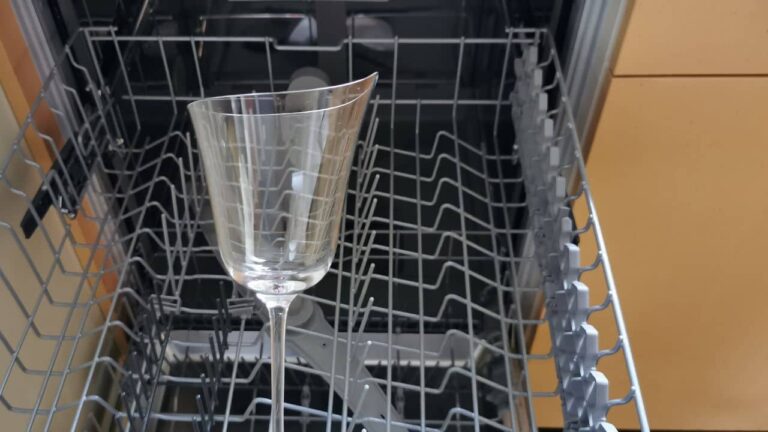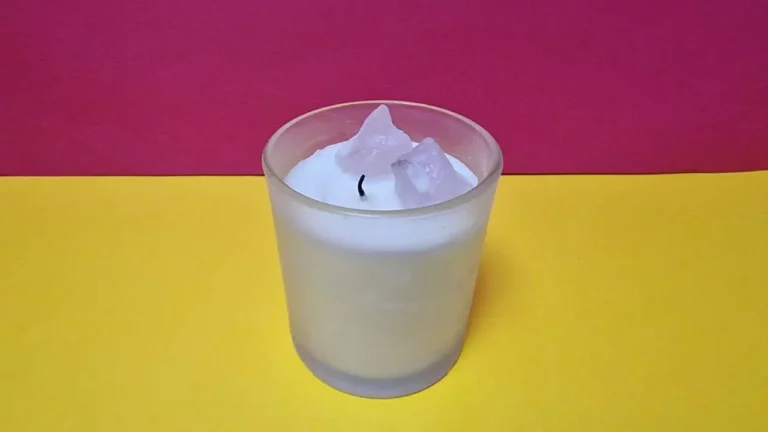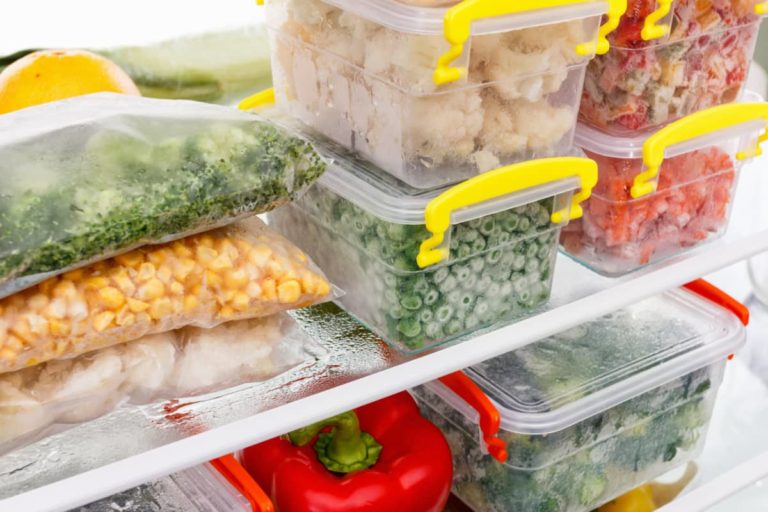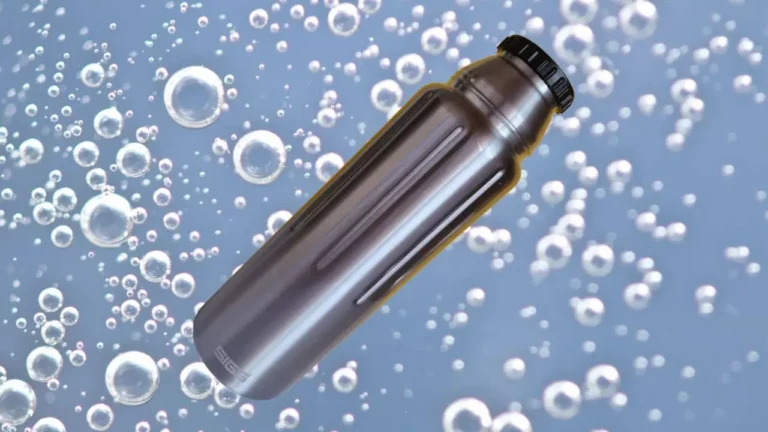Is it Safe to Store Food in a Styrofoam Container in the Fridge?
There are days when nobody is in the mood to cook or go out for dinner, so you grab just get some good old tantalizing takeaway.
Now, chances are there are leftovers and the overflowing Styrofoam boxes, on the other hand, are too filled to be emptied. No one likes to throw them away, so refrigeration is your next best option. But is it safe to refrigerate food in Styrofoam containers?
While it is safe to refrigerate food in Styrofoam containers, it is generally not the best option since the hot meal has already caused the Styrofoam to melt and contaminate the food, albeit at a negligible pace. Ideally, you would want to shift the food to a safer container, like ones made of glass that are also microwavable.
As a result, correct styrofoam container use is critical in guaranteeing safety. Before we understand this issue deeply, let us understand what styrofoam even is and what factors impact its interaction with food.
What is Styrofoam?
Polystyrene is a petroleum-based chemical compound commonly known as Styrofoam. It is made from styrene, a colorless, volatile liquid. Styrene monomers are used to make Styrofoam containers. Styrene exposure has been related to genetic damage in white blood cells as well as some blood malignancies in studies.
When solid, polystyrene is deemed safe for food usage. Heat, on the other hand, can cause chemicals to seep from the foam and into the meal. It is doubtful that eating the contents of a melted foam container will cause harm. However, frequent exposure, which can be cumulative, might be harmful to one’s health.
Time and Temperature
When hot food is placed in the Styrofoam containers, styrene monomer residues left over from the production process might migrate into the food. If you are using them for home-cooked meals, you must wait for the food to cool down first. Before placing boiling hot or hot oily items in styrofoam containers, let them cool somewhat and drain any extra oil from fried dishes.
Scientific agencies such as the Joint Food and Agriculture Organization of the United Nations / World Health Organization Expert Committee on Food stated that when styrofoam containers are used properly, oral exposure to residual styrene monomers has no negative health consequences.
To avoid food poisoning, two elements must be always considered: temperature and timing. To begin, food should be chilled as quickly as possible to prevent bacteria development. It is suggested that most foods be refrigerated within two hours following cooking. You should not keep Styrofoam containers out on the kitchen counter for more than two hours.
The temperature of the house and kitchen is also important. If it is hot, it is best to refrigerate everything as soon as possible to avoid ruining the food. The refrigerator temperature should be set at less than 40 degrees Fahrenheit, and the freezer temperature should be set to 0 degrees Fahrenheit.
Storing and Reheating
Is it okay to store it in Styrofoam, cardboard, or other containers? The answer is determined by the container’s durability and ability to close. If a container is not properly sealed or closed, it may leak or spill into the refrigerator. It is also more prone to contamination.
Furthermore, it is critical to properly reheat takeaway food before consuming it. It is advised to reheat all leftovers to 165 degrees Fahrenheit. You can reheat food in an oven or a microwave, but it is critical that it be warmed uniformly and in a microwavable container.
However, note that reheating food in a Styrofoam container is unsafe as it leads to chemicals seeping into the food. Refrigerating food in a Styrofoam container is generally fine. However, transferring takeaway food to your own plastic, reusable containers may be easier and safer. Consider doing this with any leftovers. The ideal option is clear plastic containers since they allow people to see what is within them.
It is generally safe to use Styrofoam for refrigerating food, however, avoid keeping food for an extended period of time. Even in the refrigerator, certain hazardous germs can flourish.
The Best Food Storage Containers
So, which containers are the best for storing food? Only store food in food-grade containers. Food-grade containers are ones designed specifically to hold food, such as Ziploc bags or Tupperware containers. To keep food, do not use non-food quality containers such as plastic or paper shopping bags or plastic garbage bags.
Additionally, do not reuse food containers that are difficult to clean or may contaminate stored foods since chemicals or colors from these bags can leak into the food and contaminate it. Some food containers are difficult to clean or feature difficult-to-clean lids, such as plastic water bottles and yogurt containers.
Despite the fact that these containers once carried food, they are difficult to clean and should not be reused. For microwave heating, use glass or microwave-safe ceramic containers. Do NOT use Styrofoam containers in a microwave or oven.
Here is my selection of some safe-to-use containers:
| Glass | Plastic-free Non-toxic Freezer and refrigerator safe Dishwasher-safe Oven and microwave-safe Environmentally friendly and recyclable Unaffected by acidic meals |
| Stainless Steel | Plastic-free Non-toxic Freezer and refrigerator safe Dishwasher-safe Oven-safe Non-porous surface Environmentally friendly and recyclable |
| Silicone | Plastic-free Non-toxic Oven and microwave safe Freezer and refrigerator safe Dishwasher-safe Environmentally friendly and recyclable Unaffected by acidic meals |
| Ceramic | Plastic-free Toxin-free Oven and microwave safe Freezer and refrigerator safe Dishwasher-safe Does not absorb food flavors or odors Unaffected by acidic meals |
You could find out more about stainless steel containers and glass containers such as Glasslock containers on my website.
The Bottom Line
Research organizations periodically examine styrofoam food containers to ensure they fulfill our safety standards. Findings from The Agri-Food and Veterinary Authority (AVA) are comparable to the stringent criteria set by the United States Food and Drug Administration (FDA) for styrene-based food packaging materials.
So far, test findings show that when used properly, styrofoam containers are safe to use.
However, when selecting containers for reheating, use caution. Numerous research investigations have revealed that cooking food in a microwave oven with an improper sort of container such as Styrofoam can transmit dangerous substances into the meal.
Sources
- Singapore Food Agency
- UCLA Health (Polystyrene is safe for food in solid state, less so otherwise).







